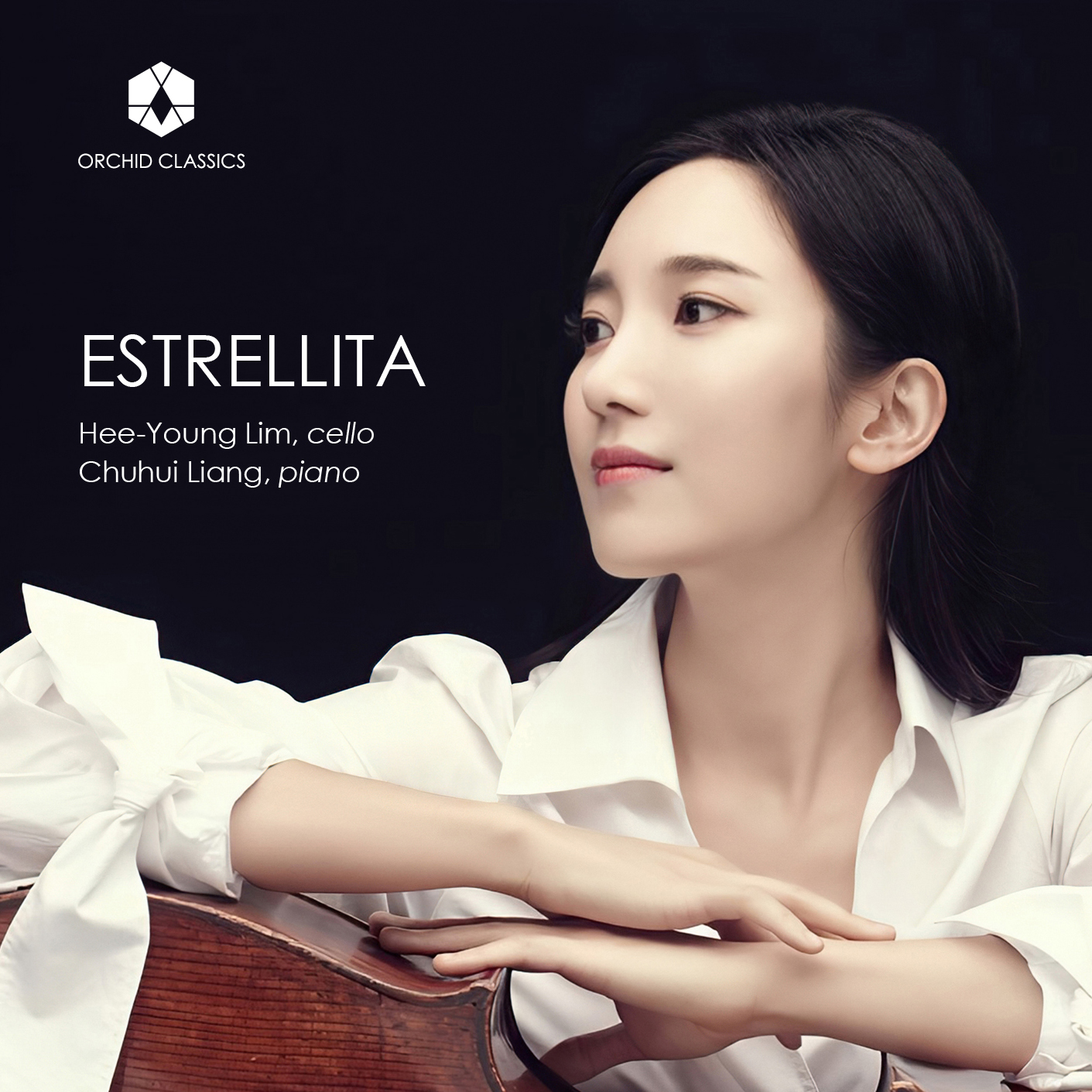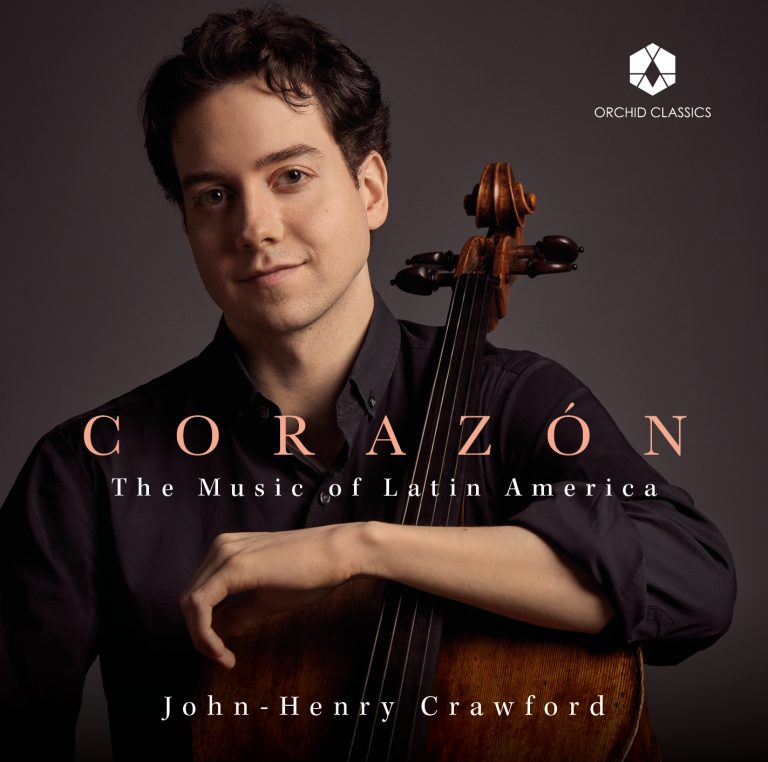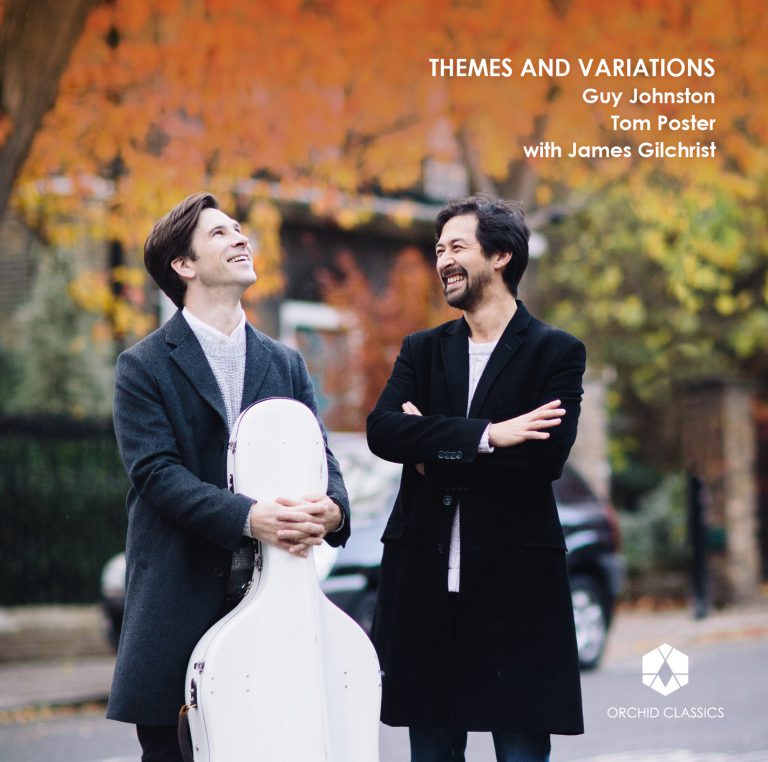Artist Led, Creatively Driven

Estrellita
Hee-Young Lim, cello
Chuhui Liang, piano
Release Date: 1st September
ORC100227
ESTRELLITA
Camille Saint-Saëns (1835-1921)
1. The Swan (from Carnival of the Animals) R.125
Franz Liszt (1811-1886)
2. Liberstraum No.3 in A flat major, S.541 No.3
Arranged for Cello & Piano by Hee-Young Lim
Claude Debussy (1862-1918)
3. Préludes, Book 1, L.117: XII Minstrels
Arranged for Cello & Piano
Maurice Ravel (1875-1937)
4. Pièce en forme de Habanera
Arranged for Cello and Piano by Paul Bazelaire
Amy Beach (1867-1944)
5. Romance, Op.23
Arranged for Cello and Piano by Hee-Young Lim
Pyotr Ilyich Tchaikovsky (1840-1893)
6. Valse Sentimentale, Op.51, No.6
Nikolai Rimsky-Korsakov (1844-1908)
7. Hymn to the Sun (from ‘Le Coq d’Or’)
Arranged by Fritz Kreisler
Fritz Kreisler (1875-1962)
8. Syncopation
Maurice Ravel
9. Pavane pour une infante défunte, M.19
Arranged for Cello and Piano by Maurice Maréchal
Pyotr Ilyich Tchaikovsky
10. Mélodie (Souvenir d’un lieu cher) Op.42, TH.116
Benjamin Godard (1849-1895)
11. Berceuse from Jocelyn, Op.100
Arthur Rubinstein (1887-1982)
12. Melodie Op.3, No.1
Arranged for Cello and Piano by David Popper
Johannes Brahms (1833-1897)
13. Intermezzo in A major, Op.118, No.2: Andante teneramente
Arranged for Cello and Piano by Hee-Young Lim
Manuel Ponce (1882-1948)
14. Estrellita
Arranged by Jascha Heifetz
Eugène Ysaÿe (1858-1931)
15. Rêve d’enfant, Op.14
Franz Schubert (1797-1828)
16. Ave Maria
Hee-Young Lim, cello
Chuhui Liang, piano
I have always wanted to play the pieces that spoke most to my heart, not only as a cellist, but as a musician. If there was ever a work that I loved, it led me to wonder how I could one day find a way to play it on the cello, so discovering these transcriptions as well as making my own arrangements was a very natural and joyful journey. Being a cellist, I must admit that we have a somewhat limited range of repertoire compared to pianists or violinists, so by exploring these new transcriptions, I was happy to expand my own repertoire. It meant a great deal to me that I was able to record such beautiful music on my instrument, and I hope you will enjoy this selection of my favourite encores.
Hee-Young Lim
With its voice-like depth of tone, the cello emerged from its continuo origins to become a solo instrument in its own right, favoured by composers seeking to exploit and explore its expressive timbres. The instrument’s versatility is such that it lends itself to arrangements of an array of melodies, such as those brought together here for this selection of ‘encores’ – small but sparkling gems of the repertoire.
Saint-Saëns said of his musical style: “I am an eclectic spirit. It may be a great defect, but I cannot change it: one cannot make over one’s personality”. Saint-Saëns further explained in his memoirs: “Music is something besides a source of sensuous pleasure and keen emotion… He who does not get absolute pleasure from a simple series of well-constructed chords, beautiful only in their arrangement, is not really fond of music.” This ability to embrace different ideas, and to enjoy the essential elements of music, proved not to be a ‘defect’ but an advantage. Today, Saint-Saëns is perhaps best known for his light-hearted Carnival of the Animals (1886), a work he refused to have published during his lifetime apart from one movement, ‘The Swan’ for cello and piano or orchestra. ‘The Swan’ was the first movement composed, for legendary cellist Charles Joseph Lebouc, while the 50-year-old Saint-Saëns was in Austria finishing his Symphony No.3. Saint-Saëns kept the other movements back because he was anxious to preserve his dignified reputation in Germany, where he often performed as a pianist, and with the French Société nationale de musique, which upheld values of seriousness and professionalism. Nobody could have objected to ‘The Swan’, however, with its sinuous, wistful melody and rippling accompaniment.
Saint-Saëns said of Liszt: “Unfortunately for Liszt – an extraordinary performer who extracted from his instrument the strangest effects, completely transforming it as Paganini transformed the violin – he was fated to emphasise his virtuosity. At the same time it was not virtuosity, however amazing, but rather his own admirable musical nature that showed his true worth.” This ‘musical nature’ manifested itself in works that encompass heartfelt emotion and some quite extraordinary innovations. The set of three Liebesträume (meaning ‘Dreams of Love’, published in 1850) demonstrate Liszt’s capacity for finely wrought melodies and irresistibly rich harmonies, especially in the ardent Liebestraum No.3.
Hailed by Ravel as ‘admirable masterpieces’, Debussy’s first book of Préludes was issued in 1910. Debussy drew inspiration from the piano music of Chopin, and from a variety of literary sources and personal experiences, but he insisted that every title should appear at the end of each piece, rather than at the beginning; his desire was that the music should speak for itself and conjure up whatever impressions it made in the listener’s mind, rather than imposing a definite programme. ‘Minstrels’, the last of the first book of Préludes, was greeted with particular enthusiasm when Debussy first performed it in 1911; the audience demanded that it be encored. The inspiration for ‘Minstrels’ came from a group of musicians in red jackets playing guitars and saxophones outside the Grand Hotel in Eastbourne in 1905, portrayed in this piece with humorous affection.
Ravel wrote his Vocalise-Étude en forme de Habanera in 1907 to meet a commission for a collection of wordless songs aimed at students learning about the intricacies of modern vocal music. The music has become better known as the Pièce en forme de Habanera, arranged for numerous different instruments, including the cello. The piece proved to be a useful preparation for larger works such as L’Heure espagnole, although Ravel’s relationship with Spanish music went far deeper: his mother’s Basque-Spanish heritage remained a significant influence throughout his career, and undoubtedly shaped the composer’s rather enigmatic character.
Amy Beach was a child prodigy who from an early age could improvise vocal countermelodies and replicate four-part hymns at the piano. Her piano studies blossomed with one Dr Henry Harris Aubrey Beach, whom Amy married in 1885. However, Dr Beach requested that his wife limit her career as a pianist, so she turned her attention to composition, teaching herself everything from fugue to orchestration. Beach’s Romance, Op.23 (1893), originally for violin and piano and heard here in an arrangement by Hee-Young Lim, is her earliest published chamber work, and certainly lives up to its name, the cello unfurling a supple melody over the piano’s luscious harmonies. The work was premiered at the World’s Columbian Exposition in Chicago in 1893 with Beach at the piano.
In numerous contexts, Tchaikovsky showed himself to be adept at taking the traditionally light, frothy genre of the waltz and transforming it into something of greater poignancy and depth; in his Sixth Symphony he even wrote a lopsided ‘waltz’ of five beats in the bar instead of the usual three. The Valse sentimentale is the last of his Six Pieces, Op.51 (1882). Originally composed for solo piano, the piece lends itself particularly well to the cello’s plangent tone – so much so that it might almost have been written for the instrument.
Rimsky-Korsakov’s three-act opera The Golden Cockerel or Le coq d’or was inspired by a story by Pushkin. It is a strange, moral tale in which an overreaching and incompetent Tsar is given a lucky golden cockerel by an Astrologer, goes to war with a Tsaritsa before falling in love with her – but ultimately gets his comeuppance. The ‘Hymn to the Sun’ is a dramatic and colourful Act Two aria, heard here in an instrumental arrangement by Fritz Kreisler. Born in Austria and eventually settling in America, Kreisler was one of the great violinist-composers of the 20th century. Full of sunshine and rhythmic vitality, his Syncopation reflects the European craze for American ragtime and cakewalks during the 1920s; Kreisler published two versions in 1926, one for violin and piano and the other for piano trio, written with his cellist brother Hugo in mind.
The origins of Ravel’s Pavane pour une Infante defunte (‘Pavane for a Dead Infanta’, 1899) are rather mysterious. Ravel veered between claiming that he had made up the title (and that it should therefore be ignored), and saying that it was “an evocation of a pavane that a little princess might, in former times, have danced at the Spanish court.” It is possible that he had the Infanta portraits by the Spanish painter Velásquez in mind. Ravel considered the piece to be too close in style to Chabrier, and criticised what he thought to be its “quite poor form”. While the work, which was originally for piano, is fairly episodic, the childlike simplicity of its theme – reminiscent of Fauré’s Pavane – is enchanting. This was only the second of Ravel’s piano pieces to be published and has become one of his best-known works.
In 1878, Tchaikovsky busied himself writing his Violin Concerto while staying at the Swiss resort of Clarens on the shores of Lake Geneva. For the slow movement he at first wrote a ‘Méditation’ but set this aside when he realised that it would not work in that context. Reworked for violin and piano, the ‘Méditation’ became the first movement of the Souvenir d’un lieu cher (Memory of a dear place) – but it was not Clarens to which Tchaikovsky was paying tribute. He made a start on the work when back in Russia, in May 1878, before heading to his patroness Nadezhda von Meck’s Ukrainian country estate in Brailivo (or Brailovo, known today as Brailiv), finishing the work by the end of May and dedicating it to ‘B*******’ (almost certainly the place itself), making von Meck a present of the original manuscript. As with his famous Souvenir de Florence, Tchaikovsky created a musical postcard as a means of commemorating a special holiday, and the third piece, ‘Mélodie’, is characterised by its sweet melody and nostalgic harmonies.
Jocelyn, Op.100 is a four-act opera by French composer and violinist Benjamin Godard. The work is celebrated for its most famous number, the tenor aria ‘Oh! ne t’éveille pas encor’ (‘Oh! Don’t wake up yet’). Better known in English as ‘Angels Guard Thee’, the piece is a berceuse; a type of lilting lullaby. Godard’s Berceuse is one of fragile beauty, with the introduction’s intertwining lines setting the scene for a long-breathed, wistful melody.
Anton Rubinstein was a virtuoso pianist and composer who founded the St Petersburg Conservatory; his younger brother, Nikolai, founded the Moscow Conservatory. Anton Rubinstein taught Tchaikovsky, and was a prolific composer in an array of genres. His Two Melodies, Op.3, open with the famous Melodie in F, a theme that seems effortlessly simple and is entirely charming.
Brahms’s late piano works display a fluency and profundity that corroborate Schoenberg’s view of him as ‘the progressive’, breaking down traditional distinctions between foreground and background, between melody and harmony. Brahms’s Six Klavierstücke, Op.118 (1893) begin with two Intermezzi, the second of which is among Brahms’s most famous short pieces. The autumnal melody is a distillation of Brahms’s lyrical, bittersweet style, while the central melody conceals structural sophistication in the form of a canon that unfolds in longer note values.
With its irresistible melody, Ponce’s most famous work is his song ‘Estrellita’ (‘Little star’, 1912) – the second of two Canciones Mexicanas – heard here in an arrangement by Jascha Heifetz. Ysaÿe’s tender Rêve d’enfant, Op.14, originally for violin and piano, was composed in 1894 and published in 1901, dedicated to the composer’s son, Antoine. Our programme ends with one of the greatest of all small-scale compositions, Schubert’s Ave Maria (1825). The piece comes from a longer cycle inspired by Walter Scott’s The Lady of the Lake but is usually performed independently, existing in an almost timeless state as a melody that sounds as though it has always existed.
© Joanna Wyld, 2023
Hee-Young Lim
Cello
Praised by The Washington Post as “a deeply gifted musician” with “an exceptional sense of lyricism” and “near-flawless technique”, cellist Hee-Young Lim has quickly established herself as one of the most charismatic, captivating and swiftly rising stars of the younger generation.
Following initial studies in her hometown of Seoul at the Korean National University, where – at the age of 15 – she was one of their youngest students, Hee-Young’s thirst for further learning took her to such institutions as the New England Conservatory in Boston, the Hochschule für Musik Franz Liszt in Weimar and the Conservatoire National Supérieur de Musique de Paris.
Hee-Young is in great demand as a soloist on the international stage. Recent concerto appearances have included those with such renowned orchestras as the Budapest Radio Symphony, Houston Symphony, KBS Symphony, Warsaw Philharmonic and the Beijing Symphony Orchestra.
In 2018, Hee-Young released her debut album of French Cello Concertos with the London Symphony Orchestra, recorded at Abbey Road Studios, London, for Sony Classical. This recording was received with great critical acclaim, drawing praise for her “exceptionally refined, silkily lyrical sound” (Gramophone Magazine), and leading one reviewer to exclaim that “Lim outshines her contemporaries in the warmth of expressiveness of her tone, which is of truly rare beauty” (BBC Music Magazine). In December 2019, she released the first in a series of collaborations with pianist, Daniel Lindemann, also on Sony Classical. Her most recent recording ‘Russian Cello Sonatas’ was released in June 2020 and the Observer described her as “a rising star” and praised her “…poised and transparent account…”.
Hee-Young embraces a wide-ranging repertoire and has a particular passion for championing the works of today’s leading young composers. Most recently, she gave the Asian premiere of Jakub Jankowski’s Cello Sonata at the Tongyeong International Music Festival. A devotee of J.S. Bach, she performed a complete cycle of the Bach 6 Cello Suites at the Zhuhai International Festival.
Hee-Young currently serves as a Professor of Cello at the Beijing Central Conservatory, the first Korean musician to be appointed to this prestigious institution. Prior to this appointment, she was the principal cellist with the Rotterdam Philharmonic Orchestra, serving under its music director Yannick Nézet-Séguin.
In December 2018, the Minister of Culture of South Korea awarded Hee-Young a Prime Minister’s Commendation.
Chuhui Liang
Piano
Chinese pianist Chuhui Liang is currently working as a collaborative pianist at Beijing Central Conservatory of Music’s accompanist department. A native of Beijing, she has won many national competitions and performs active as soloist and chamber musician. She graduated from Beijing Central Conservatory affiliated high school and received Bachelor and Master’s degrees from Beijing Central Conservatory.










